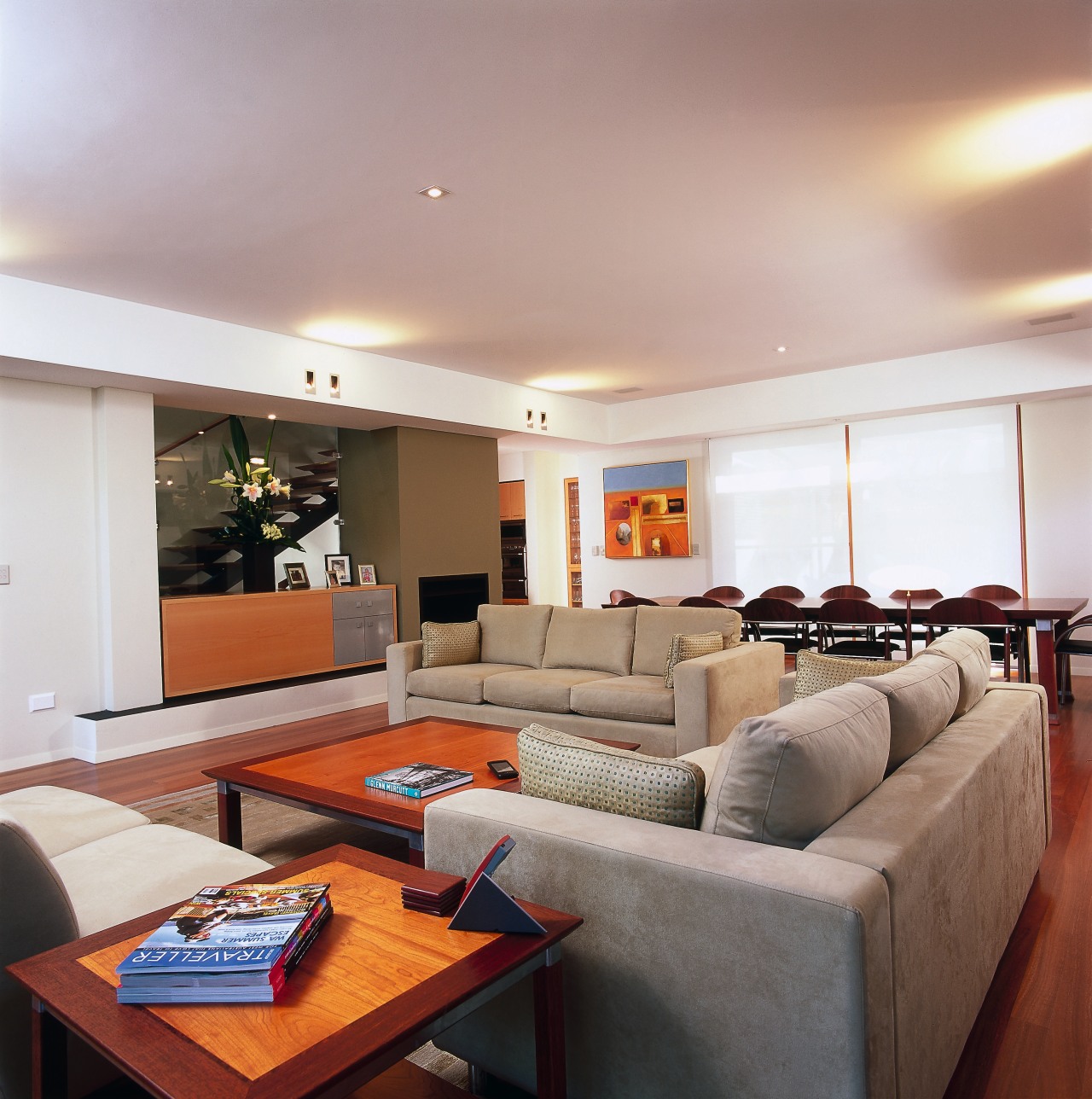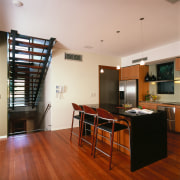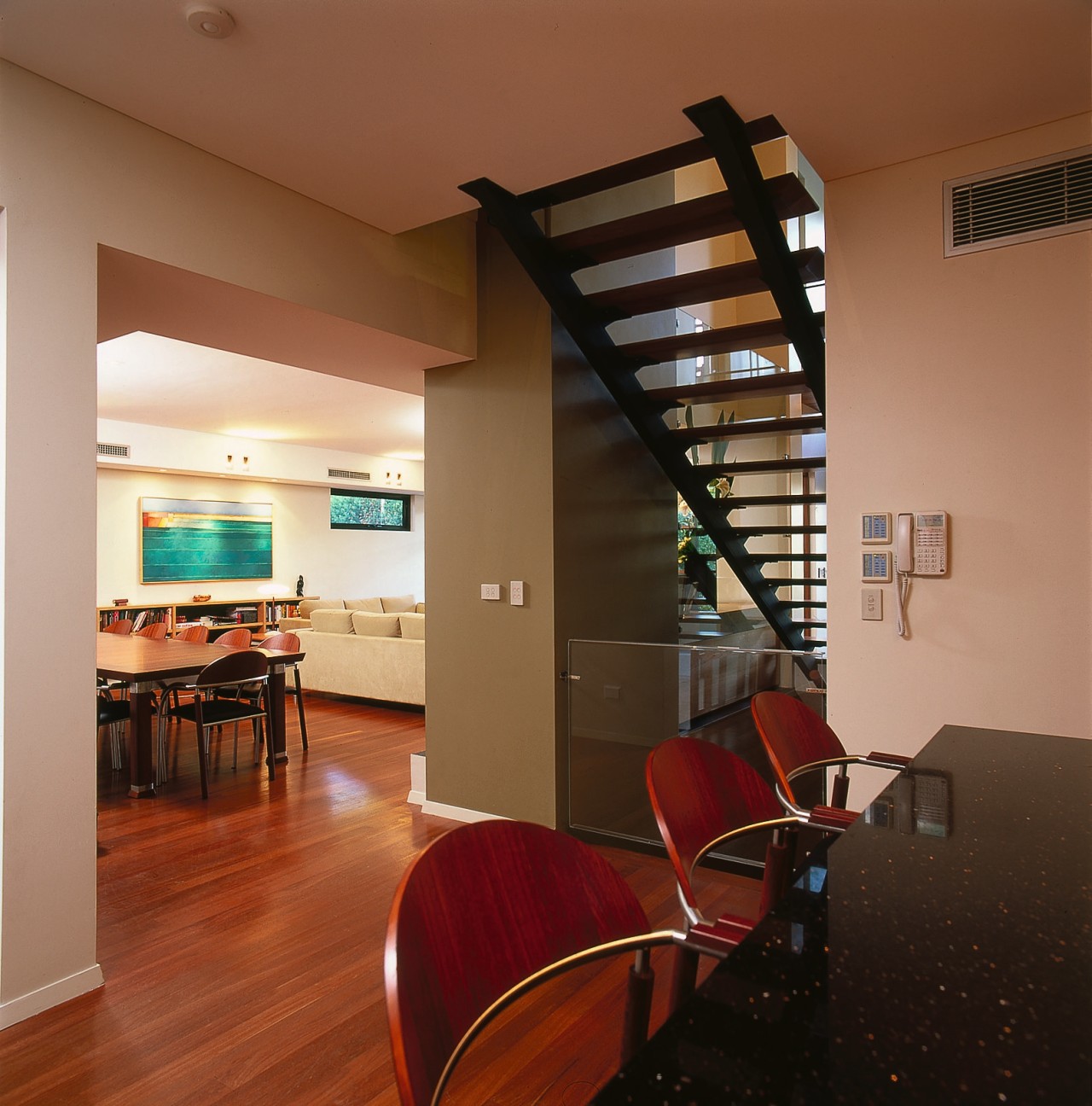Play of light
This open-plan design takes full advantage of the vibrant natural light that floods its interior

When nature offers a house such bounty as an abundance of light and lush greenery it would be a crime to shun these gifts when designing the interior. Rather than turn its back on the colours and textures of the landscape, the house featured here opens itself up to the view.
Architect Debra Brown and interior designer Jane Agnew worked in partnership to ensure the home met with the needs of a modern family, and harmonised with its environment.
"One of the very special things about living in Western Australia is the light, which has been compared to the light levels in the Mediterranean that inspired the Impressionists. This house has therefore been designed to maximise the sun and light penetration," says Debra Brown.
At the heart of the interior is a large living and dining space, with the former overlooking a lake-side park and the latter, a courtyard and pool. The outside doors resemble Japanese screens with timber frames and rectangular windows.
"The horizontal line of the door windows is visually consistent with the handrails on the outside balcony," Brown says.
A limited colour palette highlights the interior. In the living and dining space the walls are a muted white and the floors are made from rich karri timber. A feature was made of the fireplace by painting it a light olive green.
Interior designer Jane Agnew selected furniture that matched, rather than overwhelmed the interior. In addition to finding materials that complemented the scheme, an extensive amount of furniture including a dining table that seats twelve and two sofas had to be accommodated.
"When I designed the sofas, I chose natural fabrics with soft colours so that they wouldn't visually dominate the room," she says.
The distinctive dining room suite and the two coffee tables were designed by award-winning furniture maker Glen Holst.
"The richness of the grain in the wooden tables and the curvaceous shape of the chairs means that these pieces transcend their practical use and become sculptural pieces," Agnew says.
An open-plan layout ensures a wide, spacious home. However, it was essential that each room's interior was considered in conjunction with the overall design of the house, says Debra Brown.
"A wall of glass separates the living room and stairwell. It is this kind of transparency where the need for continuity in design is most apparent."
In front of the glass wall is a cabinet which conceals a plasma television screen. This screen can be made to appear and disappear by remote control.
"Large television screens, while fabulous for viewing, can also be intrusive, so its nice to be able to hide them away when not in use," Brown says.
The home's central staircase is an architectural feature designed to diffuse natural light between the individual steps. There are no upright supports between each step to block the sun shining in or obstruct the view of the park.
At the foot of the stairs a glass screen closes off the kitchen and main living areas to provide a safety barrier for the owners' small children, without interfering with the clean lines of the interior.
The kitchen has a deceptively pared-back, simple appearance. At first glance it appears to be a very straightforward design, but on closer inspection there are some finely rendered details.
On the far wall, the glass mosaic tiled splashback echoes the extensive use of glass throughout the home. The cabinetry's horizontal aluminium handles replicate the look of the horizontal rails on the balcony outside. These handles also complement the stainless steel kitchen appliances and contrast an interior dominated by natural materials.
Another noteworthy feature in the kitchen is the use of stainless steel to divide the far wall into three distinct areas. Below the upper cabinets a stainless steel shelf is suspended by steel rods and hung parallel to a light fitting, effectively cutting the window in half. Beneath this shelf is the stainless steel benchtop and at floor level, the stainless steel kick board frames the cabinetry.
Anchored by a granite-topped island, the three bar stools have been designed by Glen Holst to match the dining room chairs. The kitchen cabinetry's light coloured timber veneer contrasts with the darker wooden floors and furniture.
"It might sound a little contradictory but achieving simplicity in design can be quite a complex undertaking," says Brown.
The master bedroom reflects many of the design themes introduced in the main living area. For example, the natural colour palette reflects the view outside and the horizontal windows in the timber door frames to match the balcony rails.
In the ensuite, a mosaic tiled wall flanking a freestanding bathtub dominates the room. Opposite the tub, the row of cabinets matches the kitchen cabinetry, ensuring that even in the smallest room, continuity remains a key consideration.
Credit list
Interior designer
Kitchen designer
Paints
Heating
Upholstery
Artwork
Island benchtop
Oven/stove
Microwave
Dishwasher
Shower fittings
Basin
Hot water systems
Tiles
Builder
Kitchen manufacturer
Window treatments
Lighting
Furniture
Home entertainment systems
Kitchen cabinets
Splashback
Ventilation
Refrigerator
Bath
Taps
Flooring
Story by: Trendsideas
Home kitchen bathroom commercial design
Personality plus
Diving into nature
Classic looks, contemporary efficiency














